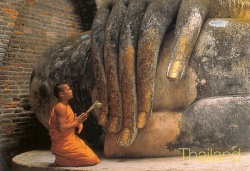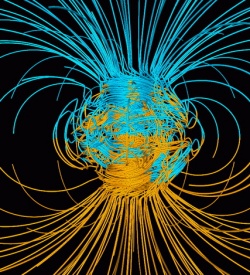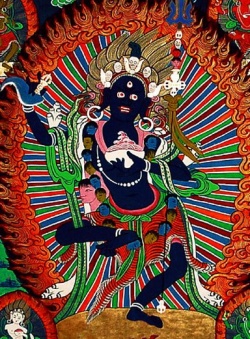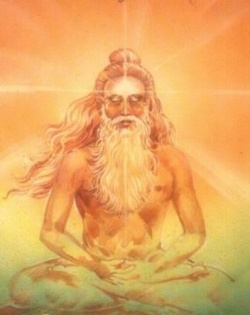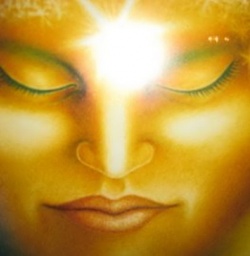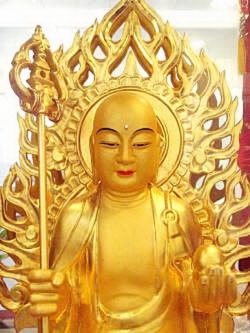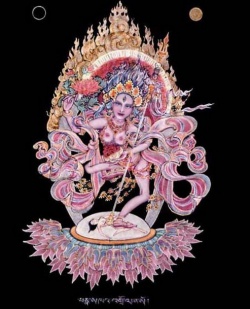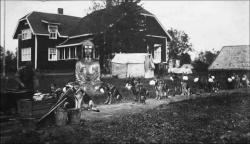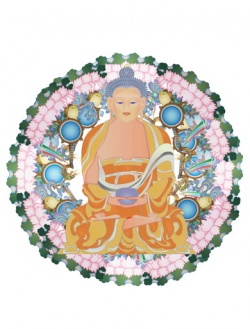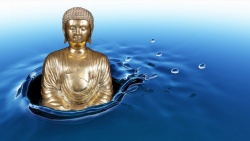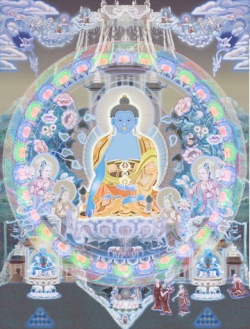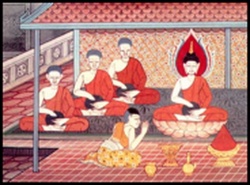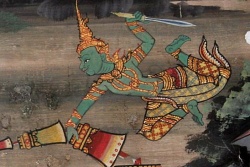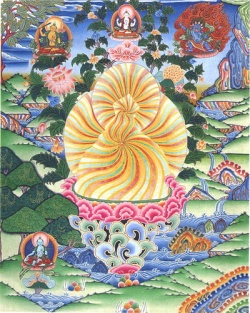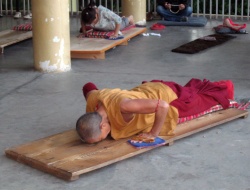The Importance of Sunyata
A lecture given by the Buddhist Yogi C. M. Chen
I would like to introduce to you what I consider the definition of Sunyata and emphasize its importance. It is necessary to comprehend the Sunyata by reading books, listening to lectures and through practice. The Ch'an or Zen School does not say that there is Sunyata or that there is no Sunyata as no certain term is emphasized by Zen. For there is no talk in Zen. So why have I come here today to talk about the Sunyata? One should not talk in a Zen Center because a Zen Center is a place of the Dharmakaya, of the Truth itself. There can be no meaningful talk and no discussion but yet without some talk there may perhaps be some uncertainties. That is why the Third Patriarch wrote stanzas on the "Faithful Mind." The Sixth Patriarch also had a sutra of his own, "The Altar Sutra," and so also used some talk. Later historically our so-called five schools of Zen developed with each school emphasizing its own particular aspect. But if we could say there was a single common element among all the schools, it would be the concept of Sunyata. That is why I have chosen this topic as my subject today.
The importance of Sunyata is not just the same as the importance of other conditions. Our Buddha Gautama attained Full Enlightenment under the Bodhi tree and the result of his Full Enlightenment was his recognition for the first time of the importance of Sunyata. When we say "the first time" in this context we mean since the beginning of this Saha world. Buddha was the first person to discover the very Truth and this truth has as its nature Sunyata. Before his teachings, surely there was Knowledge of Sunya but not Sunyata. Sunya means "empty". Sunyata is the Truth, the nature of emptiness. These are two very different terms. We say that before we pour tea into it, the tea cup is Sunya; after the tea has been poured and there is a full cup of tea the Sunya may seem lost, but the Sunyata is still there. Most people mistake Sunya as Sunyata for they don't know the real truth. The Sunyata refers not only to Sunya's nature but to every thing, every Dharma, every philosophy having the same nature of Sunyata. The Buddha discovered this Truth. Without recognizing Sunyata very well we cannot say we are Buddhists, we cannot say we know Zen.
Zen is not Sunya but Sunyata. Sunyata does not mean "emptiness" although most explanations just define it as emptiness and so fall into the one-sided view of nothingness. This is quite a mistake. People who wish to make nothing of anything advance nothing and are good for nothing. But two things of nothing never made anything. Actually, in the nothing there is the possessing of all things. Just as Ben King's song as follows:
Nothing to do but work,
Nothing to eat but food!
Nothing to wear but clothes,
To keep one from going nude!
Nothing to breath but air,
Quick as flash 'tis gone.
No-where to fall but off,
No-where to stand but on.
Only Buddha can guide on to that city of Sunyata peace whose inhabitants have eternal release! The common people who have not recognized Sunyata well say nothing, do nothing, know nothing and in the end they will have nothing. They will have the nothing of Nihilism. This is not Buddhism. Such as nothing has no savor.
The first reason why Sunyata is so important is that Buddha discovered that the Truth is the Sunyata in which there is no egoism and that everything, even Buddha himself, is produced by the Sunyata. Without Sunyata there is no Buddha and that is why it is so very important.
Before Gautama Buddha appeared in India, there existed the religions of Brahmanism and Jainism. More recently in the West other religions as Christianity and Islam have been founded. Throughout history there have been numerous scholars and many kinds of philosophy. None of these include the concept of Sunyata. Sunyata is the term which divides the Buddhist from the Outsider. Nowadays we hear emphasized that every religion is the same, that every religion goes toward the same goal and that every religion, as the saying goes, ends at a rainbow. But this idea just means that other religions try to seek some good. We are within the family of Buddhism so we must know that if a religion does not follow the Sunyata practice and does not hold the Sunyata as the Truth and know the Sunyata philosophy, then it cannot compare as a religion with Buddhism. Buddha differentiated Buddhists from the outsiders of other religions through the latters' lack of knowledge of Sunyata. This is why the Sunyata can be a very important condition to distinguish Buddhists from non-Buddhists. This is the second reason for the importance of the emphasis on Sunyata.
The third reason concerns Ch'an or, as it is called in Japan, Zen. Why doesn't the Zen school emphasize the traditional teachings, books, and Sutras? It is because the Zen school is a school of the Truth itself and neither needs knowledge nor practice. It's essence is the realization of the Sunyata. As is told in Zen stories, if you have this realization you can even burn up an image of Buddha or ride on a monk's back. Why would someone destroy a statue of Buddha? Our Zen biographies and books relate many such episodes.
Once a monk came to a monastery. He took down a wooden image of Buddha, cut it apart, and piece by piece burned it up. Seeing this, the attendant of the monastery ran to the Abbot and said, "Oh Sir, a mad person has come and has burned our Buddha image." Then the abbot went to the monk and said, "Why are you doing such a thing?" He replied, "I wanted to burn it up and get some relics. Because it is a Buddha image maybe there will be many, many relics." "No, no, this is just a wooden image." "Oh, if it is just a wooden image why not burn it to make a fire? I am so cold!" Then he was invited to go to the Dharma hall and give a lecture. In that hall there was a statue of a Hinayana arhat. He was told, "This is a representative of the first disciple." So he ran up and rode on its neck. The abbot said, "Oh, you are quite right!" By doing such things it seems the monk should be destroyed by the Protector or by the Gods for being so disrespectful. But because he is very accomplished when he rides on the neck of the image, he is in the Sunyata and when he cuts up the Buddha's statue he is in the Sunyata. So there can be no fear of punishment for a disrespectful attitude. Zen always points out that you are the Dharmakaya, You are the Sunyata, You are the Truth; Everything is produced by you. What is the nature of this Dharmakaya or Truth or Tathagatha or Suchness? -- it is the Sunyata which leads one to the highest truth. When one is in Sunyata, who or where is the person who can receive any punishment for his actions? There is no one. Real Zen is the school of the realization of the Sunyata. That is the third reason why Sunyata is so important.
The fourth reason is as follows: We say every Buddha has the Dharmakaya. What is the nature of the Dharmakaya? If everything is Dharma, how can Buddha be the Dharmakaya, something different from Dharma? The Dharmakaya is just based upon the Sunyata. Without Sunyata one cannot speak of the Dharmakaya or speak of Omnipresence. Dharmakaya is Omnipresence. Many religions boast that their God is omnipresent. Is he really omnipresent? Look at the definition of the Universe. The Christian Bible says nothing is above heaven. In Hinduism and Brahmanism nothing is said to be above Brahma's heaven. If you compare the scriptures and doctrines of every religion, it is only Buddhism which speaks about the Universe very widely and completely. Science may know about this world and about the stars, they may know about the systems of other worlds, but Buddha speaks in the Sutra not only about this worldly world but about the millions of Buddha's worlds. And he refers to all this as just a little point of the Truth, a little drop of awakening.
Omnipresence is as expansive as the ability of the individual to understand. A child may take his bed or later his school as omnipresent, enveloping all realities. A President may take his nation as omnipresent or the whole world as omnipresent. But what is really omnipresent, where is the very edge of the Universe? Some people say there is no edge. But what is beyond that no-edge. They cannot say. And what things are the common nature of every kind of Dharma we cannot say. But if you recognize the Sunyata, then everything is omnipresent. There is no space limitation, no time limitation. And to get there, to reach the Dharmakaya, there is a certain way. It is not just a theoretical philosophy with a lot of talk and no action. There is a way to recognize the Sunyata in theory which can be actually practiced in order to achieve realization.
All time is comprised of the present or now. The past was present and the future shall be present. So time is only a methodological arrangement. The past and the future, in consequence, are the development of the present; the present comprises all present times and present times are the regular and orderly development of it. Never can the present be alone on its own. Today is the tomorrow of yesterday and also the yesterday of tomorrow. There is nothing which is really a present or today. That is why one day is the same as one thousand years and one thousand years are the same as one day. Therefore whatsoever comprehends and possesses the whole plentitude of unlimited life at once to which nought of the future is waiting and from which nought of the past has flowed away may indeed rightly be deemed eternal. This realization is based on the Sunyata. Do not occupy your precious time except with the most precious thing of the Dharma which is the state of being occupied by the Dharmakaya. This is the Sunyata occupied by the three periods of time in oneness.
Buddha discovered the Sunyata from which derives the Dharmakaya, but where does Godhood fit in? To call Godhood omnipresent is not the same. Buddha also had experience with the omnipresence of Godhood. When he first meditated on the void or pure consciousness he was not satisfied. When he found pure consciousness and the void he was still not satisfied for he discovered there was still little something, which was thought. One can think or not think but even when you do not even think there still is thought. He also found that in the very void which was wide and ever omnipresent he was still bound by something. He said, "Oh, this is what is called the High Self." There was also brightness but he was not satisfied. This was still a subtle thing that was binding him. Finally he broke through it and the Sunyata nature appeared. "This kind of Dharmakaya is real, every sentient being is in it and occupies it. Why do they not recognize it?" So he remained in silence for 7 days and then all the Gods said, "Sentient beings have some Buddha nature but they cannot discover it as well as you. Please, please, turn the Dharma Wheel and come down to the next two kayas; come down to the Sambhogakaya to teach the highest Bodhisattvas; come down to the Nirmanakaya to teach human beings!" This is the reason based upon the Sunyata that explains the teaching of the Dharmakaya.
How is the Sambhogakaya connected with the Sunyata? You know our Sutras point out to us the path from the first Bodhisattva stage, the First Bhumi, on till the Tenth Bhumi. You achieve more and more realization along this Path until finally you attain Buddhahood. The first Bhumi differs from the Second, the Second from the Third, and so forth up to the Tenth Bhumi. The difference of each stage is in fact based upon the Sunyata. On the first stage of the Bodhisattva Path one's relative degree of understanding is just 10%, at the second stage 20%, up till the Tenth Bhumi when the full Bodhisattva State of 100% is complete. From the exoteric sunyata of the tenth stage of these Bodhisattva Bhumis, one then goes on to four other esoteric sunyata practices of the Vajrasattva Path, and then one gains the fourth stage of Sahajakaya and the fifth stage of Mahasukha Prajnakaya. All these stages are just relative degrees of the Sunyata and throughout all these steps the measurement of every stage is the Sunyata. That is why Gautama Buddha became a Buddha of the Nirmanakaya, the Sambhogakaya, the Dharmakaya, the Sahajakaya, and the Mahasukha Prajnakaya. All are based on comprehension of the Sunyata. Without this we cannot distinguish the first stage from the second. So the Sambhogakaya of Buddhahood teaches the Bodhisattvas according to the degrees of comprehension of the Sunyata.
The same is true for the Nirmanakaya. The Nirmanakaya form of Buddhahood has come down to mankind to show the examples of Bhikshus and Hinayanists and to talk about Buddhism. In this first stage the main thing is to think about the Sunyata of the personality. Every arhat of the four stages recognizes the Sunyata. The difference between the first and second stage is that of shallow and deep. In such a way these first Hinayana stages are based upon the degrees of the Sunyata of the personality.
The teachings of Hinayana place most emphasis on the idea of renunciation and this real renunciation is also connected with Sunyata. That is why in foreign countries one recognizes home and at home one sees a foreign country. It teaches us to separate the pure from the impure. Through renunciation you should ameliorate the nature of the Dharmakaya and produce a more perfect and distinguished subjective (personality), purging the body by dissolving all that is heterogeneous and uniting the pure to the pure, the well-digested to the well-digested and the crude, according to the natural Truth. All this exertion is based upon the Sunyata of personality of the Hinayana.
The Sunyata of personality in Hinayana doctrine also appears in terms of Karmic Causation. If you want to know the Karma causes which belong to the past, look at the Karma effects which belong to the present. If you want to see the Karma effects as they will appear in the future, look well at the causes operating here and now. One will thus surely make war on evils and wage destruction on the passions. This is why an Arhat is called a Passion-Killer. The final stage of non-passion is just Sunyata. This is the importance of the Hinayana as connected with the Nirmanakaya.
Among the Mahayana Buddhist schools which emphasized the Sunyata condition, the Hua-Yen School emphasized the Ten Mystic Gates. All the Ten Mystic Gates include talk about supernatural power and all these Ten Gates are based upon the Sunyata.
The nature of Sunyata is one, but the condition therein and thereout are many. The one is not separate and alone and the many are not separate from one another but are still in the oneness. The objective and subjective both may be one or an entity or many or a multiplicity. When we say Dharmakaya, it is one; when we say Nirmanakaya, they are many. When we are in the Truth we are in oneness. When we are operating within the functions of supernatural powers, we are many.
No multiplicity can exist except by some participation in one. That which is many in its parts is one in its entirety: that which is many in its accidental qualities is one in its appearance; that which is many in number of faculties is one in species: that which is many in its emanating activities is one in its original essence. There is nought in the world without some participation in the one, which in its all-embracing unity contains beforehand all things; while all things conjointly combine with even their opposites under the form of oneness. And without the one there can be no multiplicity; yet contrariwise the one can exist without the many--just as the unit can exist before all multiplied numbers. And if all things can be conceived as being ultimately unified with each other, then all things taken as a whole are one. If you take away the one there will remain neither the whole nor part nor anything else in the world; for all things are contained beforehand and are embraced by the one as a Unity in Itself. This is the Dharma which is based upon the truth of Sunyata. It is the important truth which supernatural power comes from.
Out of the season of Sunyata Truth there comes the disposition of the whole world and the virtue of the five elements, the functions of the five wisdoms, the non-beginning and non-ending; in the midst of time comes the alternations of nature's courses and the changes of season, the revolutions of the years, and the arrangement of stars, the nature of living creatures and rage of wild beasts, the force of winds and reasonings of men, the diversities of plants and virtue of roots. For in the Sunyata Truth are all things that are hidden and not foreseen; but they are all holy, one, manifold, eloquent, active, undefiled, sure, sweet, loving, that which is good, quick, which nothing hindereth, gentle, kind, steadfast, assured, secure, having all power, overseeing all things and containing all spirits and intelligence, pure and subtle.
The ten mystical and wonderful gates of supernatural power taught in the Hua-Yen School all depend upon this truth of Sunyata.
1. The Gate of Co-Relation. All things are co-existent not only in relation to space but to time. Distinct as they are and separate as they seem to be in time, all beings are united to make one entity.
2. The Gate of Perfect Freedom. All beings, broad or narrow, commune with each other without any obstacle. The power of all beings as to extension and intention are equal and limitless. One action, however small, includes all actions. One and all are commutable freely and uninterruptedly.
3. The Gate of Mutual Penetration of Dissimilar Things. All dissimilar existences have something in common. Many in one, one in many and all in unity, as I have spoken of before.
4. The Gate of the Freedom from Ultimate Distinction. All elements are mutually identified. It is a universal identification of all beings. Identifying oneself with another, one can synthesize with another. Two opposed theories or incompatible facts are often identified. One in all, all in one, one behind all, all behind one, the small, the great, the low and the high moving harmoniously together.
5. The Gate of Complementarity. The hidden and the manifested will make the whole by mutual supply. If one is inside, the other will be outside or vice versa. Both complement each other and complete one entity.
6. The Gate of Construction by Mutual Penetration of Minute and or Abstruse Matter.
7. The Gate of Indra's Net. The real facts of this world are mutually permeating and reflecting like Indra's net where jewels reflect brilliance upon each other.
8. The Gate of Elucidating the Truth by Factual Illustration. The Truth is manifested in fact and fact is the source of enlightening.
9. The Gate of the Ten Time-Periods Creating One Entity. Each of the past, present and future contains again three periods. They make up nine periods which altogether make a form of the tenth period. All the other nine gates are concerned chiefly with mutual penetration in a horizontal plane. This gate of time is concerned with the vertical connection.
10. The Gate of Completion of Virtues. The chief and the retinue work together harmoniously and brightly. If one is the chief, all others will work as his retinue.
All these ten gates are based upon the Sunyata from which all its functions are able to appear freely and harmoniously. That is why the Sunyata is so important.
In Vajrayana, the six elements of yogic identification and the four blisses and four Sunyata identifications, all are based upon different degrees of Sunyata.
The above statement is only from Theory. Now let us take some examples.
Let us speak of the supernatural power to see far away. As human beings we can only see a certain distance; heavenly beings can see everywhere within their heaven. Some arhats can see more things of wisdom. A Bodhisattva has eyes to see every kind of Dharma of the Sunyata. The Sunyata is so wide and deep. The degree to which you can see far away and hear far away is established according to your level of practice of the Sunyata. Sunyata distances are spaceless without limitation; where the Dharmakaya is, there is the Sunyata. There is no distance from here to there.
You may get some water from the ocean and when you taste it you say this is the salt water of the ocean but it tastes no different on this side of the great Pacific Ocean or that side, a drop tastes the same everywhere. Likewise the Sunyata has no space limitation. Whatever you are doing, you can at that same moment reach it.
For example, Milarepa knew Sunyata quite well and practiced quite diligently. He agreed to compete with a Brahman outsider who could magically ride on a drum to see who could reach the top of a Himalayan mountain first. The outsider had almost reached the peak while Milarepa was still asleep below. All his disciples called to him to wake up but Milarepa just said, "Oh, never mind, I like to sleep. Let me be." When the outsider just about arrived, Milarepa just thought, "O.K. I am there" and he was instantaneously there because his body is one with the Sunyata. The Sunyata is everywhere so whenever someone who is with the Sunyata thinks of a place he can arrive there immediately, there is no need to ride on a drum, no need to fly, no need for action. That is why we say Sunyata is "reaching the goal without walking."
Our Ch'an books tell of many such wonderful tales, such as boxing without fists, even without using one's arms. What is this? It is just Sunyata. So the Ten Gates and the six supernatural powers are altogether based on the Sunyata because if you have the Sunyata you can function with every type of supernatural power.
We should not only talk about the Truth and about Wisdom but also about Great Compassion. Is the Great Compassion also from the Sunyata? Yes, We can say that Sunyata proves the truth of no egoism, no self, no selfishness. We then have pity for all sentient beings and all our actions are for sentient beings and we practice the six paramitas just for others. So on the negative side there is no self and on the positive side because there is no self we practice altruism and help others. Selfishness exists because you do not personally know the Sunyata, you don't know where lies the real truth and just say, "I want to do this, this will bring me good merit and by this merit I may get some money or by this merit I can get a good rebirth and will go to heaven." All these types of thoughts and actions are actually self-centered because they are without recognizing the Sunyata. After you recognized the Sunyata you think that whatever you do, whatever you eat or wear, your enjoyment is just selfishness and you should not do like that. You then feel you must cut out your desires and help others; That is why it is called the Great Compassion. It is the Sunyata of self. There are many opportunities and things to do for others; it is foolish to do things only for oneself.
This is the Great Compassion which you can get from the Sunyata; as the negative Sunyata is the destruction of self from which the Great Compassion comes out. Before one destroys his "self", his selfishness remains which does not allow him to practice Great Compassion. A man who has attained the final degree of perfection is dead and yet not dead but infinitely more alive in Sunyata or Buddha Nature of the Dharmakaya in which he lives for others and not for himself. The sign of your death to other sentient beings is that you detach yourself from them and do not look for anything from them. Further, the sign that you have died to your passions is that you no longer seek benefit for your self or to ward off injury and you are not concerned about your self for you have committed all things unto the Dharmakaya. The sign, again, that you have been merged in the Bodhisattva's will is that you seek nothing of your self or for your self or by your self--Buddha and the Bodhisattvas are working with you. Give your self up into the hands of the Dharmakaya like the corpse in the hands of the one who washes it, or the child in his mother's bosoms. Such a one is living only by truth which is Sunyata. That is why it is so important.
Nevertheless, the foolish man conceives the idea of self and holds to it very steadfastly. The wise man knows there is no ground on which to build the idea of self. What is soundless, touchless, formless, tasteless, constant, odorless, without beginning, without end, higher than the great--all these are of Sunyata but not of the "I" or your "self." What is changeable, vain, full of sorrow, transmigration, impermanence, the finite, the foolish--all are connected with the self which is the opposite of the Sunyata.
All struggles, quarrels, wars, confusions, troubles are from selfishness which appears and is enlarged whenever the Sunyata is lost. Even Saint Matthew has said, whosoever exalts himself shall be abased, and he that shall humble himself shall be exalted. Milarepa said if you take the lowest place you shall reach the highest. The Tao Te Ching writes:
Be humble, you will remain entire.
Be bent, you will remain straight.
Be vacant and you will remain full.
Be warned and you will remain new.
He who has little will receive.
He who has much will be embarrassed.
Most people divide Buddha's foundation into two pans called "the nobility of two feet;" one is the Deep Wisdom and the other is Great Compassion. Actually in my experience these are actually just one thing because from the Sunyata you can get not only Deep Wisdom but also Great Compassion. When your wisdom is deep then you recognize the Sunyata very profoundly and completely lose yourself; when you totally lose yourself you just do things totally for others. The more you do for yourself the more you bind yourself; the more you bind yourself with your ego, the more you are apart from the Sunyata. So the greater is your recognition of Sunyata, the more you lose yourself in it and the more you do things for others. This is why Deep Wisdom produces Great Compassion and is one more reason why Sunyata is so important.
Let us not talk too high. Let me talk a little closer to our daily lives. The Sunyata is a very good arm to cut off all our demons, all our difficulties, and all our evils. Suppose I have the habit of smoking. I try to visualize that everything is Sunyata and that smoking is also Sunyata. By and by if I realize that you and I are Sunyata I will be driven to recognize that smoking is not useful and then I can cut out this bad habit. Even if you have a disease, think, "Oh the disease also is Sunyata; it cannot always abide with me, maybe sometimes I can go to a good Doctor, get some good medicine and be cured," so immediately you will not think of the disease as so painful and you will feel relieved.
If you have the determination to discover the potentiality of Buddhahood, you must also first know the Sunyata. You must cut off all karmic bad habits to truly discover this potentiality of Buddhahood. What makes this possible is the Sunyata. In our consciousness have been established some good seeds and bad seeds as well as our Buddha nature. All our karma from our past lifetimes has led us to be born here in America as such a person in such surroundings and this may seem like fatalism. But if you recognize Sunyata the concept of fatalism is finished because in our consciousness there is not only the karma of our past lifetimes but also the potentiality of Buddhahood. I can take this latter gem as a new seed to practice to be reborn in Buddhahood because my karma is not just that I am a man, but that I encourage myself to become a Buddha. This is possible because in the Sunyata you are changeable. It is not to be in Sunyata to think "I am just a common person and am likely to continue as such." Many persons say, "We are Americans, not like the Eastern people. We enjoy this and that and indulge in this and that habit. This is my nature." This is the result of not knowing the Sunyata. When you know the Sunyata you know yourself as changeable, that your karma and habits are changeable. Then you can have the determination to just let the good seeds grow up, to flourish, flower and get the result. We know the Ch'an is everywhere. You must think, "I am a Buddha. I must reflect within myself as to whether my daily life follows my old karmic habits or do I really do everything like a Buddha." If you do not, you must hold the very important principle of Sunyata in mind that you are changeable. "I am not a real Buddha now, I don't cheat myself, but I am changeable and may indeed become a Buddha.
Question and Answer
Q. Yogi Chen, could you tell us something about your life.
A. My life is Sunyata, you know, changeable. I changed many times. I can talk a little about this. When I was young, my mother always told me, don't go near the water, an astrologer said you will drown in the water. She always told me, "You seem wise but will have a short life, you will die very soon." This was my foundation for Buddhism, Impermanence. While very young I feared impermanence as my mother always was afraid that I would die young. When I went to school my teacher was a Buddhist who not only taught me from the text books but also taught me good poems about impermanence as extra lessons. I always repeated these with tears. Since my youth my foundation of impermanence has been very well developed. I always kept how to get a long life as my goal. When I was just ten I visited a Taoist. I knew that Taoists always said that a man can live longer, for 300 years. I met a Guru of that school. He had fasted for 10 years but his face was pink and clear like a baby. I did not take food and went to him to learn how to meditate. He became my Taoist Guru and I studied and practiced with him until I was about 14 years old. Then I made contact with many Buddhists and read many Buddhist books and began to learn the differences between Taoism and Buddhism. At that time I did not have so much fear of death and thought about things being changeable, that a short life can become a long life even without Taoism through the Buddhist practice of Non-self. Since that time I left Taoism and became a Buddhist and meditated. I wanted to become a monk but my parents would not allow me to as I was their only son. I became a Secretary of Education in Hunan Province when I was 24. I controlled a big library and borrowed many Buddhist books from it.
Before I took refuge as a Buddhist, I read many Buddhist books. Because I was Secretary, the whole Buddhist community asked me to write something to welcome Tai Shu to our city. Tai Shu was a monk who traveled the four continents including America. I was asked to write a public essay to give to every person to welcome Tai Shu. At that time he was building a large monastery. Tai Shu was in another province when he read my welcoming essay. He sent a lay Buddhist to me with a scroll. I still remember what it said, "The Universe is just one mind," followed by my name in Chinese turned into a Dharma name. After that I took refuge from him. My mother still asked me not to travel so much, but I traveled to western China, to eastern Tibet and learned some Tantra. First they said I could only live to the age of 25, but I passed that year; again they said you will live to only 40, but at 40 I went into a cave and meditated there for two years. Surely you can say everything is Sunyata but you also must do something to realize it. That year my house, my books, everything was destroyed. This was during the Second World War. Then they said you will die at 58. By that time I was in northern India where I meditated for 25 years. So all those bad years passed by me while I was in my hermitage, they melted in the Sunyata. Now I have come here to America and am helped by my friends so I hope I can still be here to talk with you for a long time. We can practice together for many years, I hope. Everything is because Sunyata is changeable.
